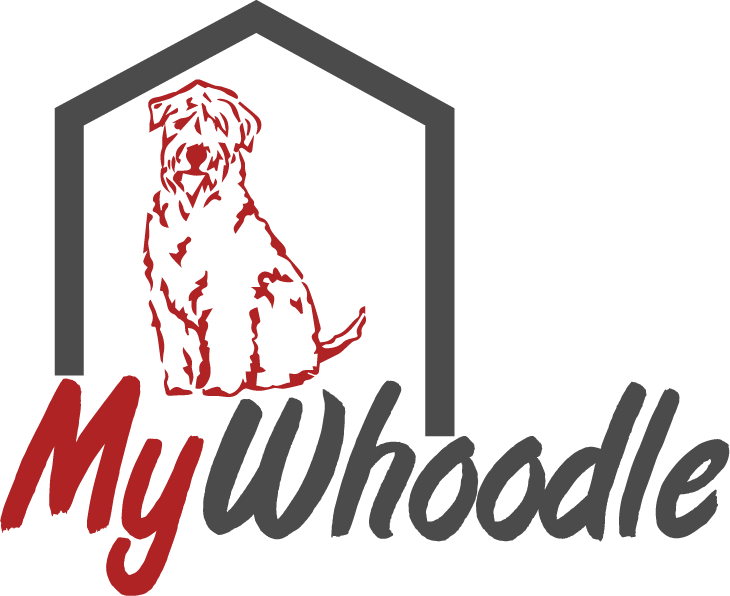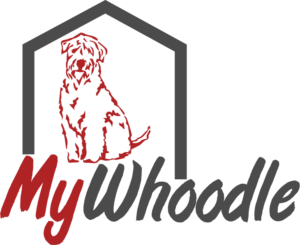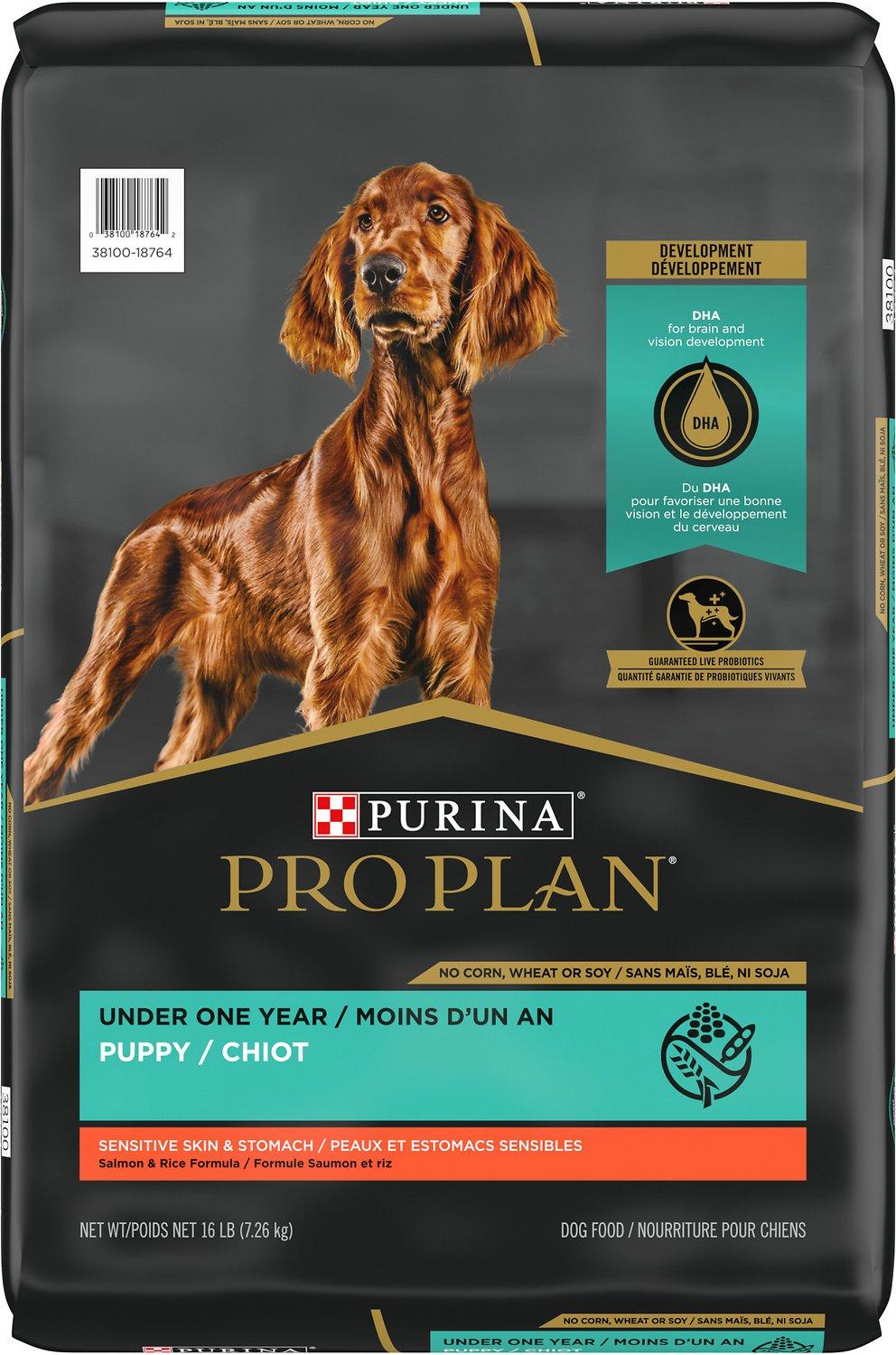Whoodle Nutrition
Information
Of course, we all know that proper nutrition in humans can contribute significantly to a healthier and more active life, and is also the key proponent in extended life. It is the same in animals and never more true in the lives of dogs.
At My Whoodle, our dogs mean the world to us. We, therefore, adhere to a strict guideline in which we only provide the very best foods for our dogs. We’re not talking “pretty good” foods, but only the best of the best. Along with our own first-hand experience and with the strongest recommendations from well qualified DVM’s and other reputable experienced breeders, we have concluded that there are actually several brands we recommend. A few of those brands are Purina Pro-Plan, Taste of the Wild, Natures Domain, Life’s Abundance, and Blue Buffalo.
Dog food Advisor gives you all the nutrition information about brands and is a great resource when deciding on which food to go with. Click HERE to see the top dry dog foods for 2021.
To ensure that our dogs are receiving proper nutrition, we also incorporate into our adult dog’s diet grass-fed beef , raw beef bones, raw eggs, and NuVet supplements for total body health.
*Note: There is currently much debate as to whether or not grains are good or bad for your dog. Unfortunately, there are numerous studies that post strong arguments both ways. So, we leave it up to you to use your best judgment on what to feed your dog. Please do your research.
Here’s some additional information about Dog nutrition that we hope you will find it interesting and informative.
Can something as simple as carefully reading a dog-food label add three to five years to your pet’s life? Can the wrong bite of an ostensibly healthy fruit have nasty and lasting consequences? Does your dog need a diet—and would you know if he did? For pups as for people, scientists are constantly re-examining and revising the official live-longer-and-better guidelines.
APPLES
All the stuff in apples that makes them nutritional powerhouses for humans (fiber, vitamins A and C, omega-3 and -6, antioxidants, flavonoids, polyphenols) works wonders for Rover, too—with a few exceptions. The seeds contain a form of cyanide, which human systems can filter out but our four-legged friends can’t, and too many apples can lead to diarrhea or, -because of their high sugar content, weight gain.
BONES
Despite popular images, not every bone is good for Fido. Almost everyone knows that easily-splintered poultry bones are particularly dangerous for dogs. But improperly prepared beef and pork bones can be just as harmful. Safe bones are specially prepared to be almost rock-hard and virtually “shatterproof.” Cesar’s line of bones include beef leg bones that are slow-roasted for as long as 36 hours to ensure their safety. His sterilized bones are all-natural and recommended for dogs with sensitive stomachs who still love a good bone! Usually available for purchase at your local Feed store.
DRINK!
Dogs should drink about an ounce of water per pound of body weight daily, and of course you know to always have fresh, clean water available. And pooches usually regulate their own intake; if you notice changes in drinking habits, see your vet, as this could indicate health problems. Doggie sports drinks are available, and while it might be cute to share a post-workout quaff with Bingo, canines don’t need specialty drinks. (They don’t sweat out electrolytes like humans do.) As for dental rinses and water additives, see your vet if you’re concerned about halitosis and plaque, and to get recommendations.
EGGS
Loaded with protein and a host of vitamins and minerals, eggs provide blue ribbon–worthy luxurious coats. Are raw eggs OK? Some say no, citing concerns of salmonella poisoning and a biotin deficiency caused by a substance in whites, while others say yes (and give them the shells, too), noting that salmonella is fairly rare in dogs and the yolks contain enough biotin to overcome any deficiency. Bottom line: If you’re worried, go ahead and cook them.
FISH
Fish is an excellent source of protein for Scooter and can be a lifesaver for dogs with meat allergies. -Although some raw-diet enthusiasts recommend sushi and even the occasional whole raw fish, there are parasites that can be extremely harmful (notoriously one in salmon) that cooking quickly destroys. Just remember, all that beneficial fish flesh hangs on a frame comprising scads of tiny bones, any one of which can do a number on a dog’s mouth and digestive tract.
GRAINS
Grains are an important part of a balanced doggie diet. and rice especially can be a godsend for a pup with digestive woes who needs a bland diet for a few days. That said, the gluten in wheat is a noted allergen for many dogs —symptoms include itchy skin and ear inflammation (dogs may shake their heads in discomfort). Also, you will find that corn is a main ingredient in most common dog foods. It’s not because corn is good for your dog, but rather it is a cheap fill in comparison to other ingredients. So foods containing oats and rice may work better.
HOW MUCH AND OFTEN TO FEED
If dogs ran the world, the Canine Café would be open 24 hours a day. Most dogs love to eat. And eat. And eat some more. But though it’s tempting to show your love with extra helpings, or by making food available all day, overfeeding does no dog any favors. (Overweight pets can suffer from the same ailments as hefty -humans do.) There is no precise answer as far as how much to feed a dog, -because caloric needs vary with size (a Chihuahua doesn’t chow down like a -Mastiff), age, and activity level. One rule of thumb is that if Sir Barksalot is -energetic and keeping his figure trim, he’s probably eating the right amount. Food packaging offers recommendations, but remember: Those are just guidelines (see “Use a Measuring Cup”). How often should you feed your pal? Morning and evening meals are recommended for adult dogs. (Puppies are a different story; go by your vet’s advice.) Twice-daily feedings make it easy to monitor your dog’s intake, and thus his health, since dogs who are not feeling well tend to drop their routines. Also, regular feedings keep a dog…regular.
ICE CREAM
Dogs are generally lactose intolerant, yet for some reason they love dairy products. A spoonful of ice cream—or -frozen yogurt, which has less lactose than ice cream—every now and then shouldn’t bother Barney (but do keep an eye on him to see if he -experiences any tummy distress). Also, be sure the ice cream doesn’t contain ingredients that are harmful to dogs: chocolate, coffee, raisins, and certain nuts, to name just a few.
JERKY
The FDA has cautioned against feeding dogs chicken jerky from China, and some U.S. companies issued voluntary recalls of jerky treats because of fears of melamine-tainted gluten, also from China. But there are lots of safe jerkies, and dogs go wild for it. Also, tossing King the occasional piece of for-humans jerky while you’re sitting around the campfire won’t hurt him. Just be sure it’s not the spicy or flavored kind. And you could also try making your own: Recipes abound online.
MOLDY FOOD
Your dog should be the only thing sprouting fur in the kitchen, but don’t freak out if Jiggs gets at some old bread. Turns out a little mold won’t hurt him (as one online poster noted, think of what else dogs put in their mouths). Still, like humans, dogs can have mold allergies, and some molds can cause very serious problems, so keep the lid firmly on the trash can.
NUTS
Never give your dog -walnuts or macadamia nuts! Both are extremely poisonous for pups (a toxin in macadamias can lead to tremors and hind-quarter paralysis). Cashews and peanuts are better, but nuts in general are high in calories and phosphorous (which can lead to bladder stones in dogs), and they’re often salty. And none of that is good for Bowser. An occasional peanut or cashew is fine, but do make it a special treat.
ORGANIC FOOD
Thinking of going organic with your best friend’s diet? Here are a few things to keep in mind: Organic foods often use human-grade protein sources and generally have fewer fillers (corn and wheat and their by-products) and no synthetic preservatives, pesticides, food coloring, or other additives—thereby reducing the number of potential allergens in your dog’s diet. They typically contain whole grains instead of bulk fillers, which aid in weight control and digestive health, and boast superior nutritional quality, which can reduce skin irritation and boost coat sheen. So what’s the downside? Well, apart from the expense of organic foods, as of this writing, pet foods are certified as organic according to guidelines established for human organic foods. Read food labels closely to make sure your pup’s getting all his essential nutrients. Plans are in the works to bring organic pet food standards in line with pets’ needs, but until that happens, do scrutinize the small print. You can follow the progress on the -Association of American Feed Control Officials website (aafco.org).
PUMPKIN
This festive gourd is a miracle food for dogs. Good for both diarrhea and constipation, canned pumpkin (not raw, not the sugary, spicy pie filling) is loaded with fiber and beta-carotene, which the body converts to vitamin A. Don’t give Buddy a lot of it—too much A is highly toxic to dogs—but a couple of teaspoons a day for little pups, or a couple of tablespoons for big boys, should keep them right on track.
QUICK TIP
To keep Scruffy from chewing on electrical wires, make them unpalatable by coating them with a mixture of rubbing alcohol and hot sauce.
RAW MEAT
And so the raw food debate rages on… One thing all parties would agree on, though, is that pristine raw meat would be a marvelous source of quality protein for Spike. However—and this is a big however—the meat most of us have access to just isn’t pristine. Salmonella is a major concern, especially in raw poultry (not to mention the danger posed by chicken bones), and all raw meat carries the risk of microbes and parasites, including E. coli. And we’re not just talking about dogs being at risk here; humans are also vulnerable, through handling the meat and also through cross-contaminated surfaces. While many do feed their dogs raw meat to no ill effect, take care to purchase the highest quality available. If you go this route (and you will not be alone, as the raw movement is gaining more and more adherents), be sure your ingredients are absolutely fresh, watch out for bones, and keep a close eye on your pal’s total needs.
SUPPLEMENTS
Yet another area where there’s a lot of debate, although the evidence on supplements is pretty straightforward. If Zipper is getting nutritionally balanced meals, and is energetic and fit, he probably doesn’t need supplements. But if you think he isn’t getting enough nutrition from his food, supplements can be the way to go. Keep in mind that minerals, especially, should never be given to pups unless prescribed by a vet. Calcium, so good for -human bones, actually hinders bone formation and can damage maturing joints and cartilage in puppies, and too much zinc can be toxic (see “Zinc”). Vitamin A can damage blood vessels; excess D can lead to muscle atrophy. Also, supplements can interact with or hinder absorption of vital nutrients in foods or reduce the -efficacy of prescribed medications. Dogs on special -diets—raw, vegetarian, or vegan—may need vitamin or mineral supplements, as will many dogs who eat solely homemade foods, but that’s something for your vet to determine.
TREATS
Who’s a good dog? Every single one of them, and they all deserve a treat now and again. And that’s the key: now and again. A cornerstone of many training methods, treats provide almost as much joy to the giver as to the recipient. But unfortunately, like most wonderful things in life, they come with a catch: Even healthy snacks have calories, so make sure you count goodie calories as part of your pup’s daily intake. And remember that sometimes the things that make treats so tasty are salt and fat—another reason for moderation. When choosing snacks, keep your dog’s particular nutritional needs and dietary restrictions in mind, along with his flavor preferences. A quick online search will turn up lots of easy, healthy recipes for homemade treats, many customizable to various dietary restrictions.
USE A MEASURING CUP
Alas, humans aren’t the only animals getting wider, and obesity in dogs leads to the same kinds of problems that it does in us: diabetes, increased cancer risk, and liver disease—to say nothing of the toll it takes on joints. One solution, along with lots of exercise, is strict food portion control. Don’t eyeball—as one expert noted, your eyes are bigger than your dog’s stomach—use a measuring cup. And serving sizes recommended on packaging are just guidelines. If Spot is packing on the pounds while eating the recommended amount, use a smaller measuring cup.
VEGETARIAN DIETS
Even the most committed vegetarians and vegans must allow that dogs are true omnivores who derive essential nutrients—not just protein—from meat. That doesn’t mean that there aren’t healthy, thriving, vegetarian dogs. But they’re healthy and thriving because their conscientious owners make a concerted effort to ensure their pups are getting from other sources what they’d traditionally get from meat. Just one example: Dogs get essential amino acids from meat; a vegetarian dog will need to get these from quality supplements. And about that protein? Eggs are a terrific non-meat source of protein, and dogs love them. For vegans, there are lentils and legumes and brown rice, as well as supplements for vegan diets. Whichever route you go—vegetarian or vegan—you must keep your vet informed, so she can head off any vitamin or other nutritional deficiencies at the pass. Two good sources for advice on raising a meatless mutt are Dr. Pitcairn’s Complete Guide to Natural Health for Dogs & Cats and the People for the Ethical Treatment of Animal’s website (peta.org).
WEIGHTY MATTERS
Obesity is the most serious medical problem facing dogs in the U.S. today. Scientists delicately advise owners to look for things like a slight increase in the fat over the rib cage, an unusually rounded abdomen, or subtly jiggling flank folds as signs that a dog is moderately overweight. But of course what they’re saying, in essence, is that deciding whether Snowy is headed for maximum density comes down to a commonsense assessment. Consult your vet if you’re concerned; the chart he’ll use as the deciding factor looks something like the one here.
X: AS IN, BANNED!
This is by no means an exhaustive list, but here are some common people foods that should never be pup foods: avocados, alcohol, baking soda and powder, caffeine, chives, chocolate, corn cobs, fruit pits and seeds, garlic, grapes, macadamia nuts and walnuts (see “Nuts”), milk and milk-based products, mushrooms, nutmeg (and other spices), onions, raisins, rhubarb leaves, tomatoes (especially stems and leaves), xylitol (found in many candies and gums), and yeast dough.
YUCCA
A natural wonder for the canine world, when yucca root is steeped into liquid or ground to a powder and added to Blackie’s food (just 1/4 teaspoon or so), it helps soothe tender joints, and—due to its substantial anti-inflammatory powers—alleviates pain associated with hip dysplasia and arthritis. It also eases digestive problems and can calm itchy skin caused by allergies. Grind it yourself or get the root or supplements at health food stores or online. As with any natural aids, ask your vet about interactions with prescription medications and specific dosage.
ZINC
If your otherwise healthy best friend eats a balanced diet, she shouldn’t need zinc supplements. But even avoiding the supplements doesn’t mean zinc toxicity can’t occur; it does, especially in puppies, who eat everything—including pennies minted after 1982 (yep, they’re zinc on the inside now). Symptoms include vomiting, diarrhea, and anemia, which can be diagnosed only by your vet—to whom you should take your pet pronto if you suspect she’s ingested anything zinc, because left untreated, zinc toxicity can lead to kidney failure.


